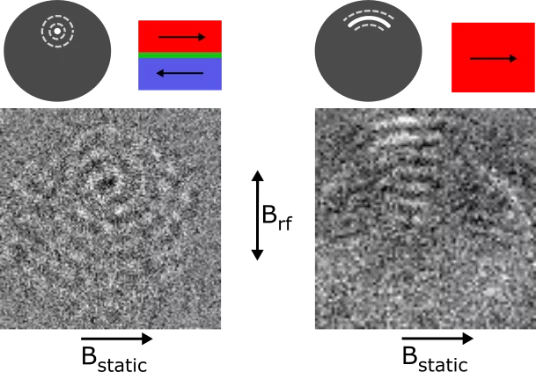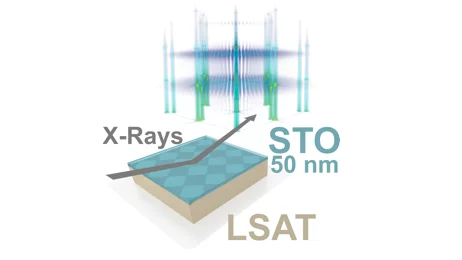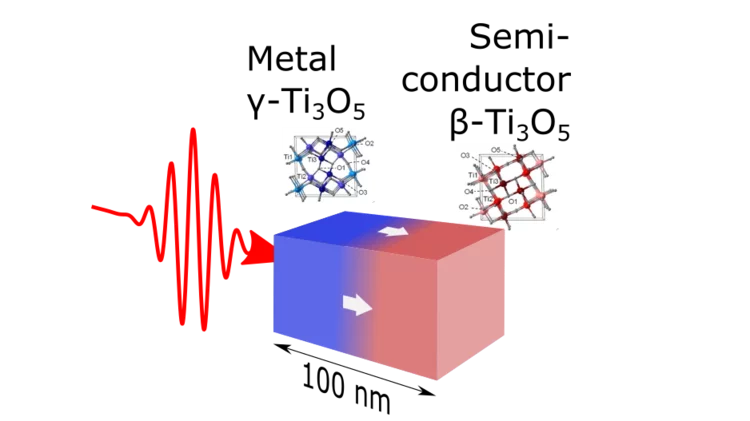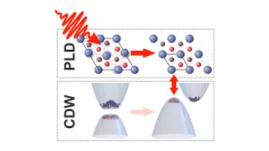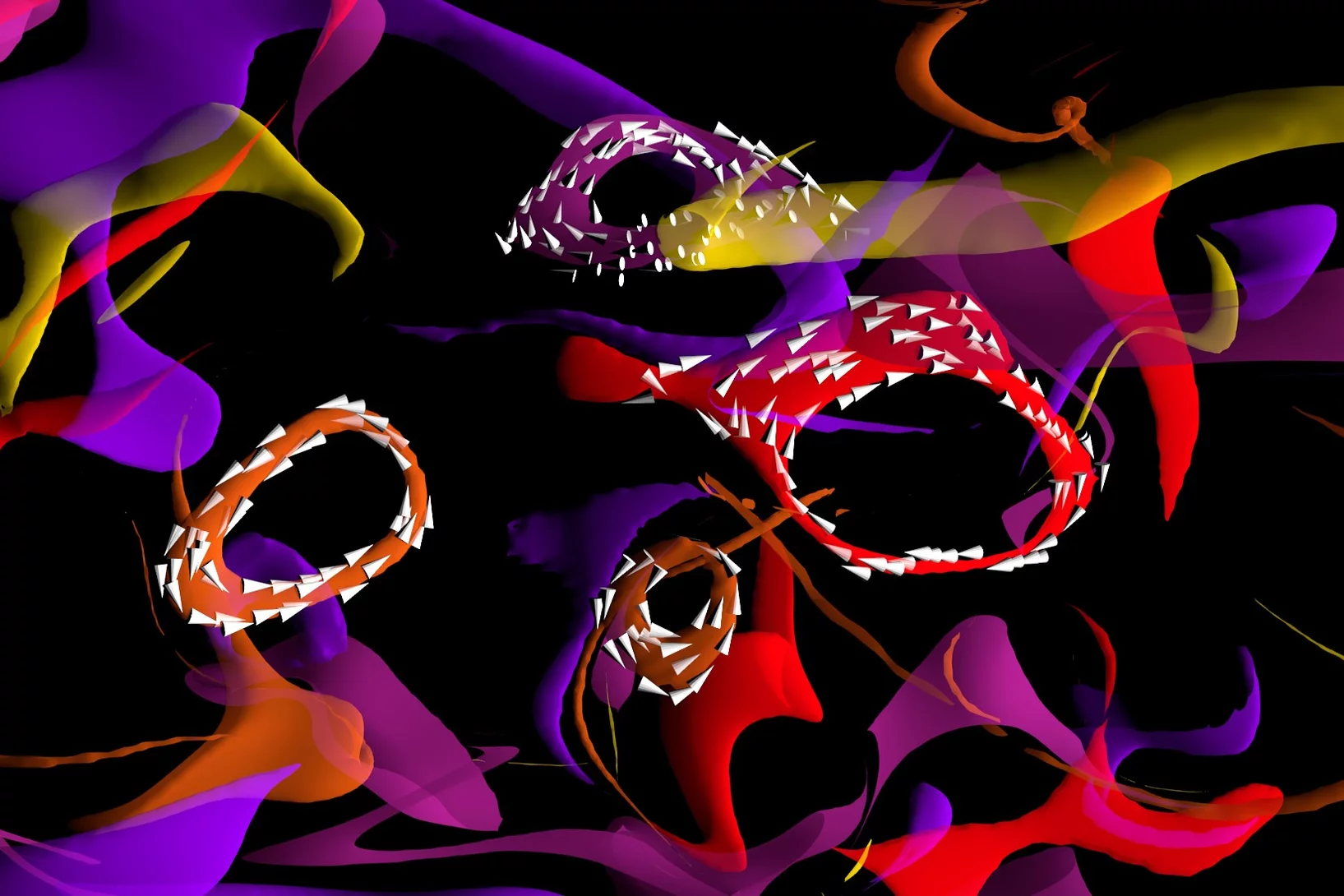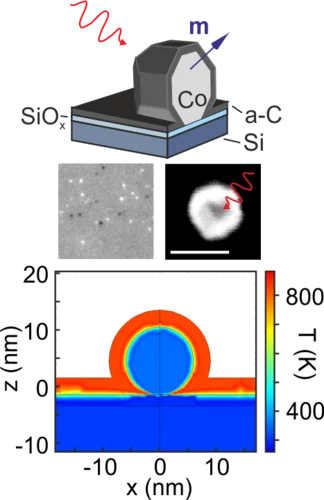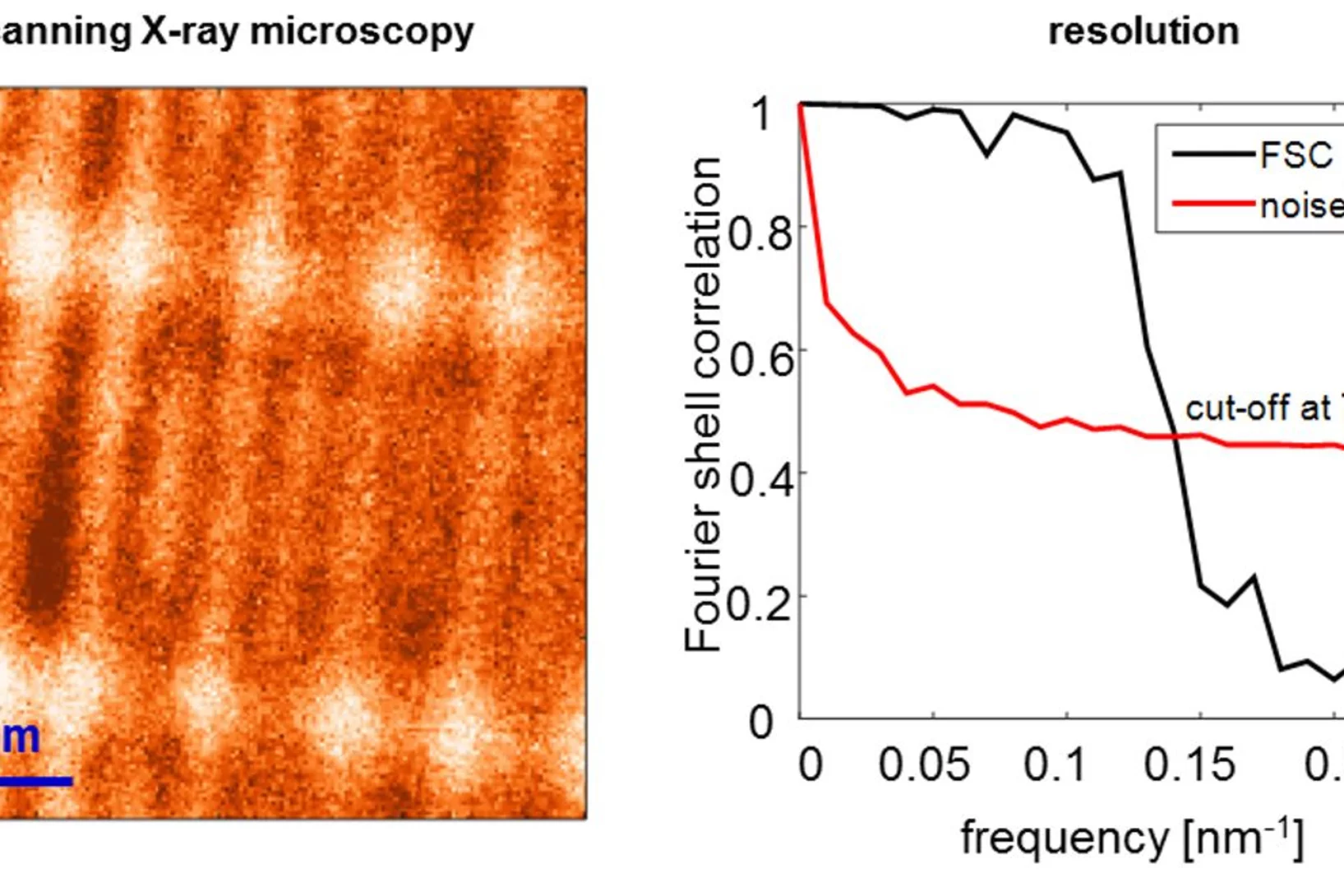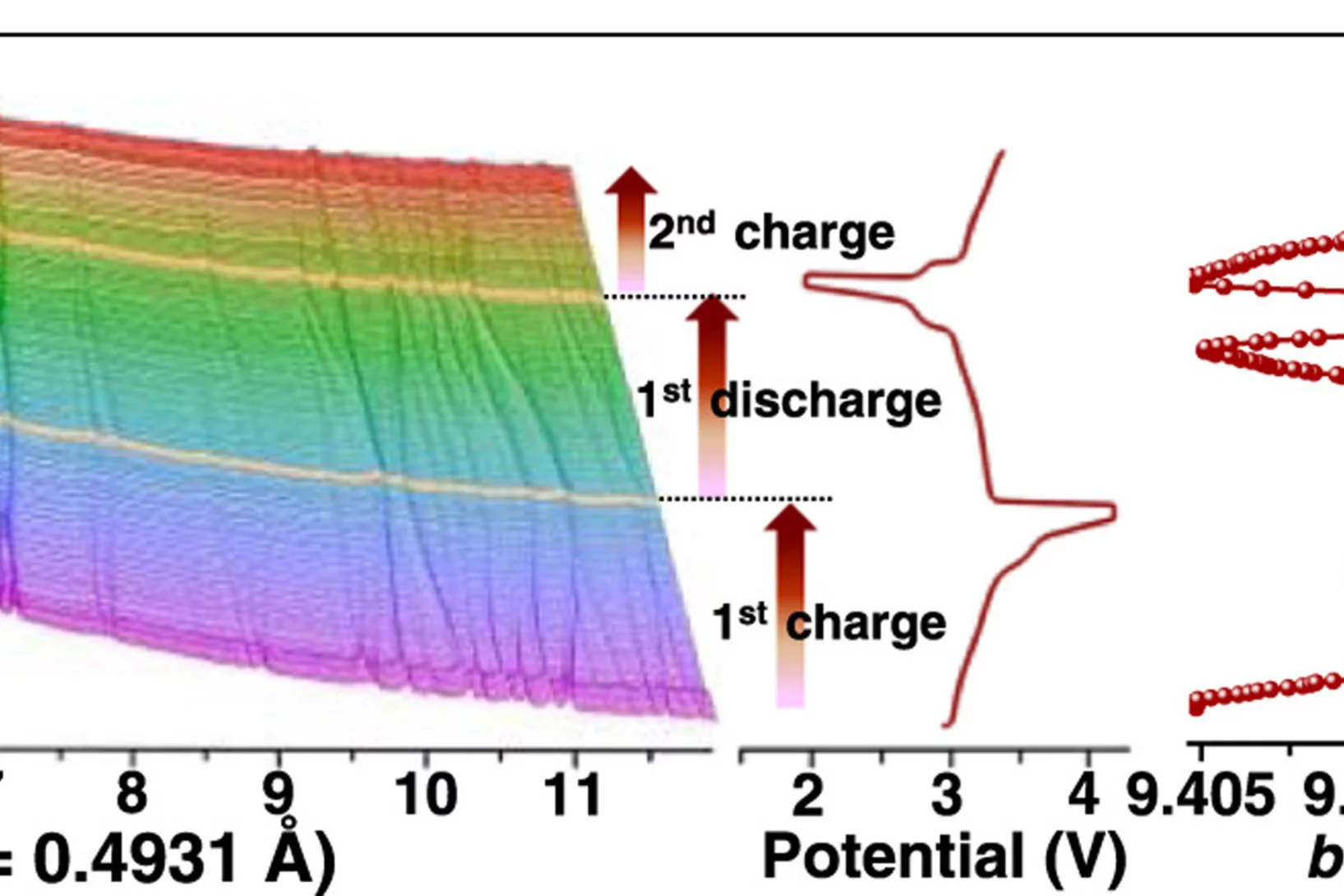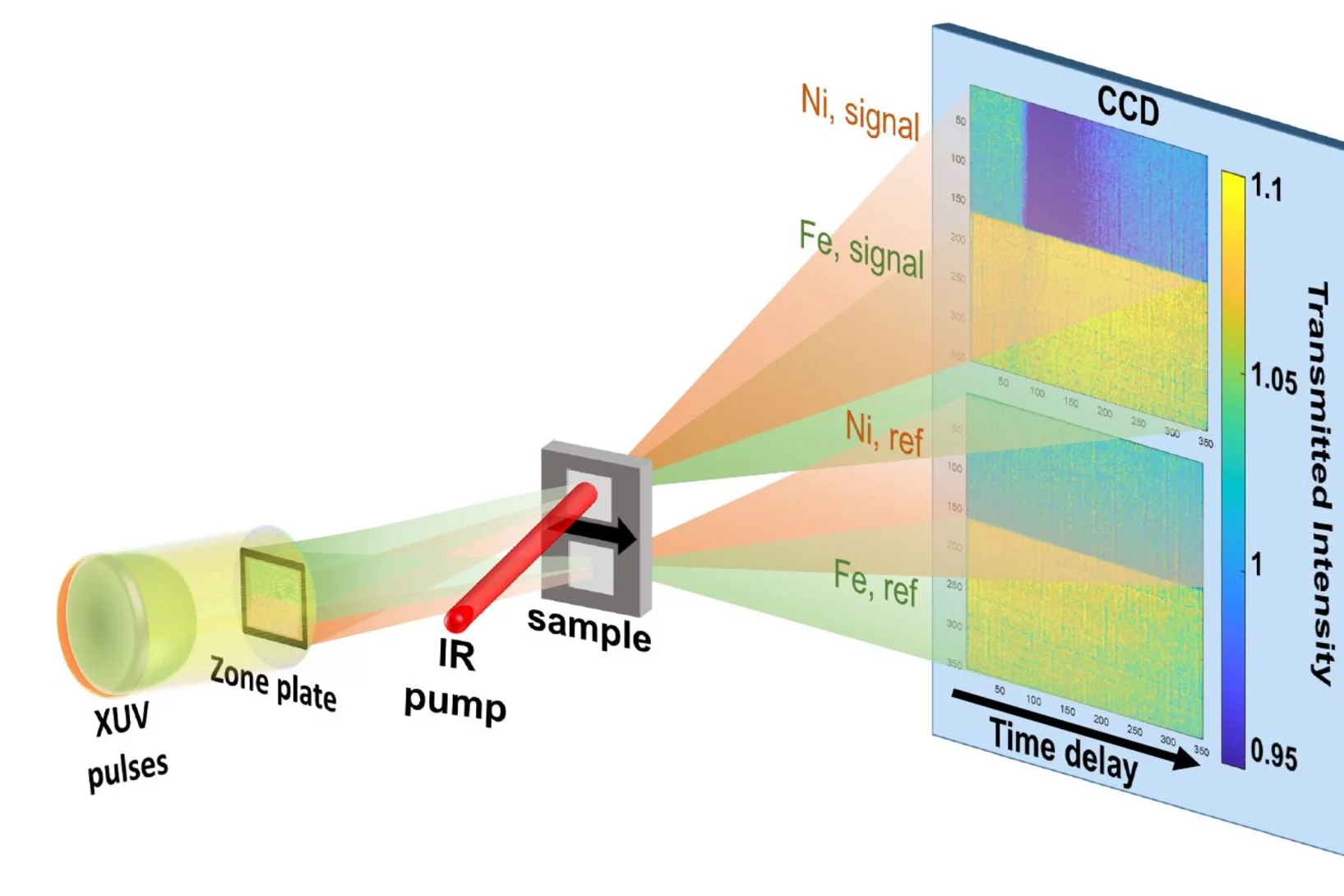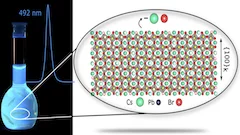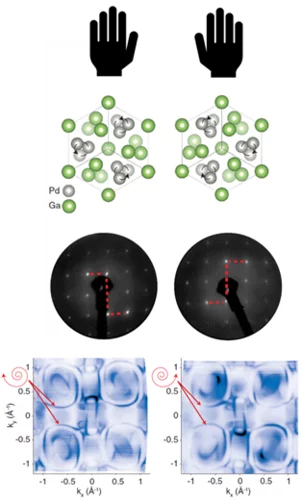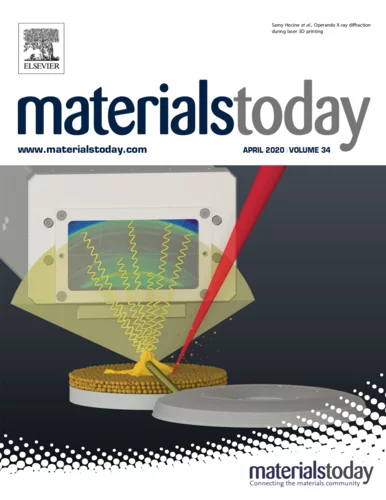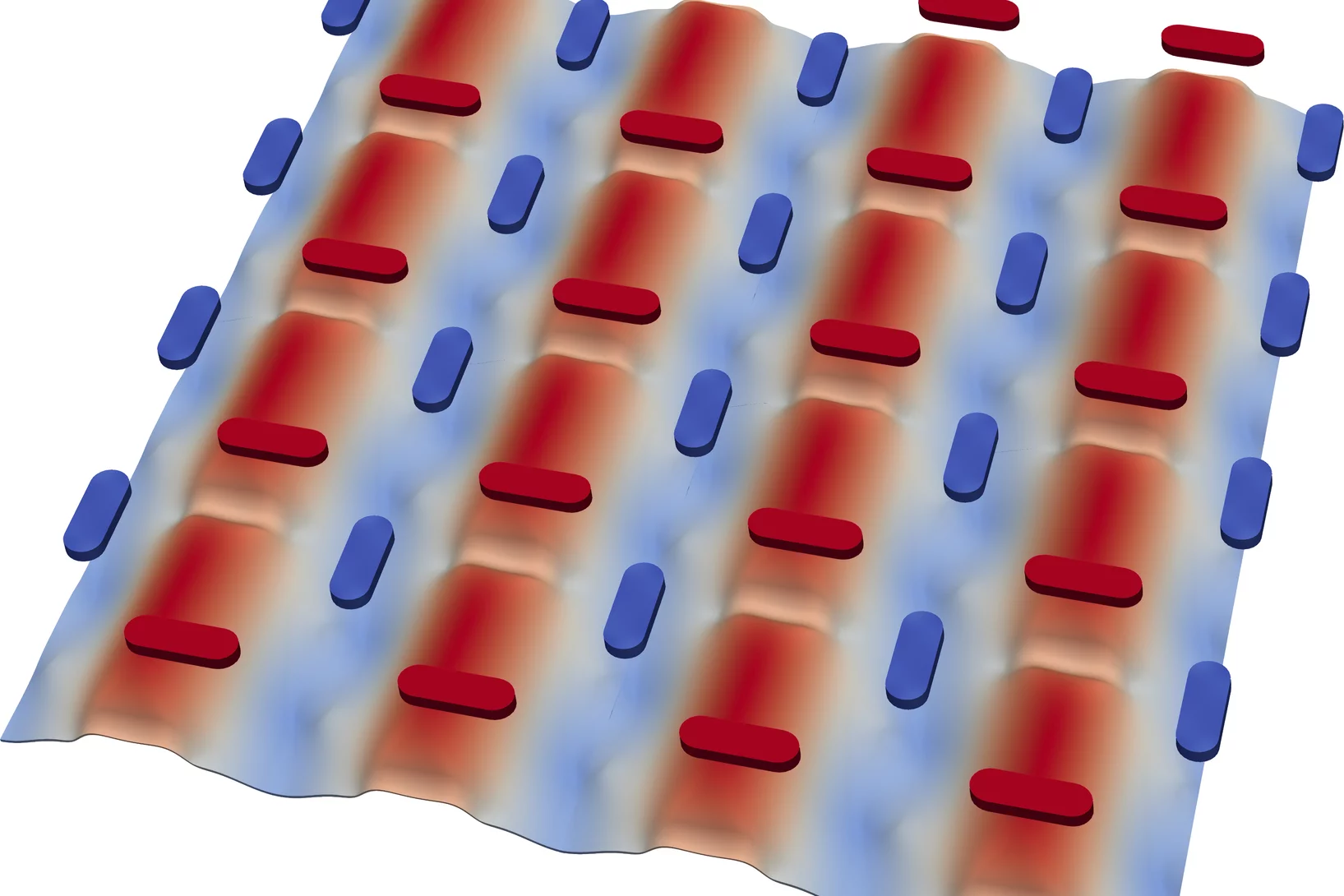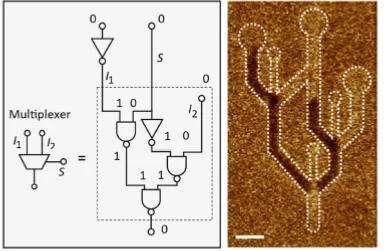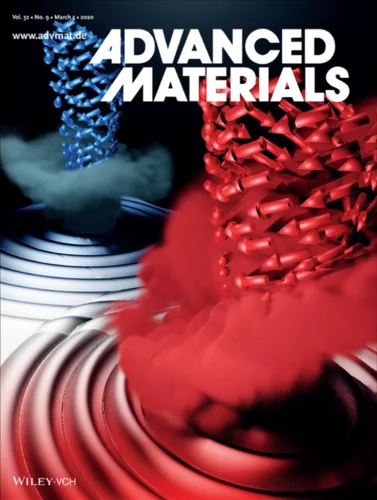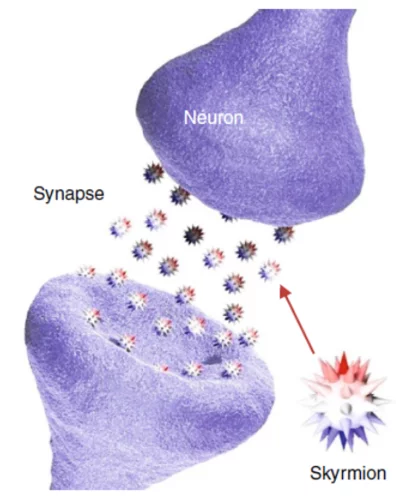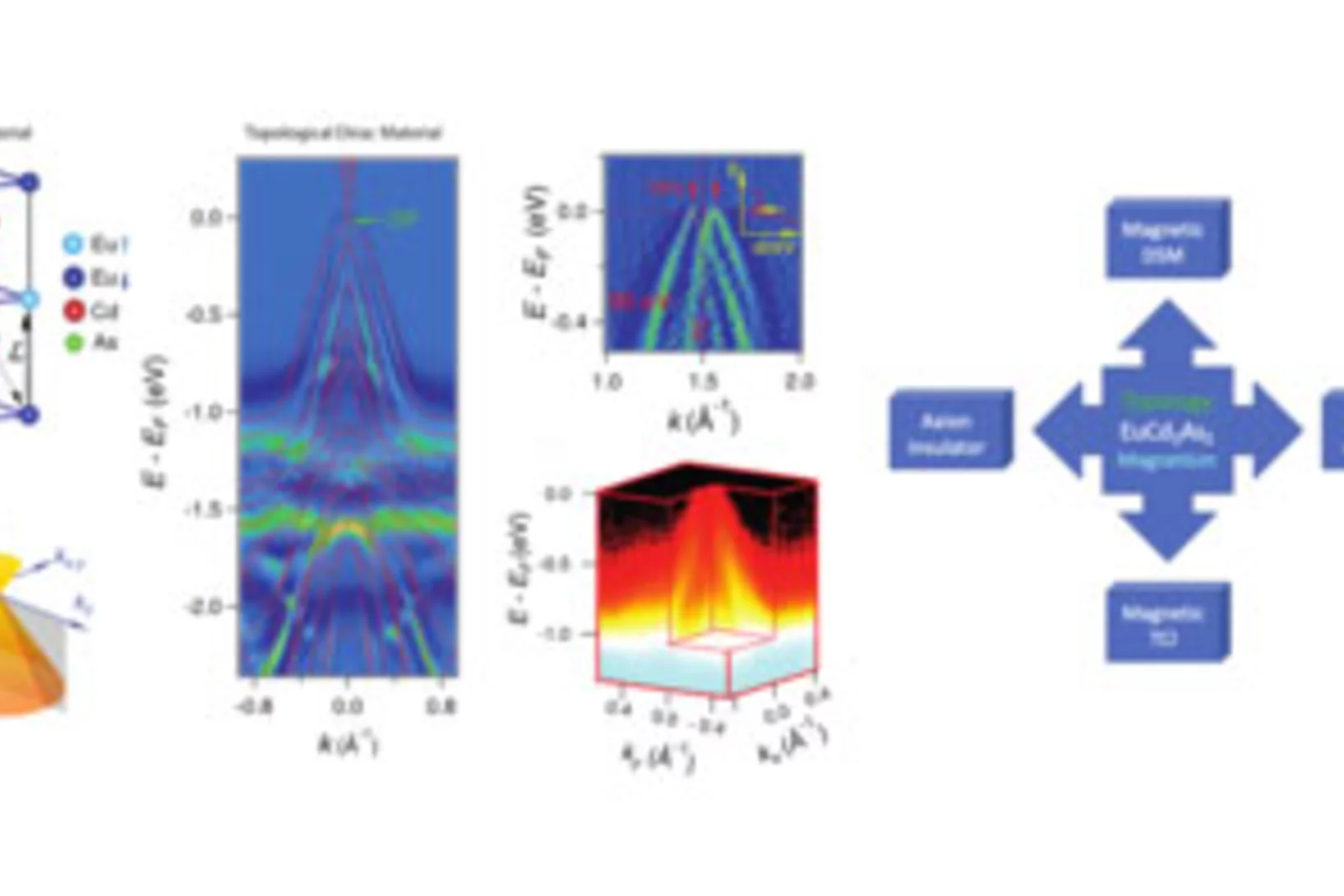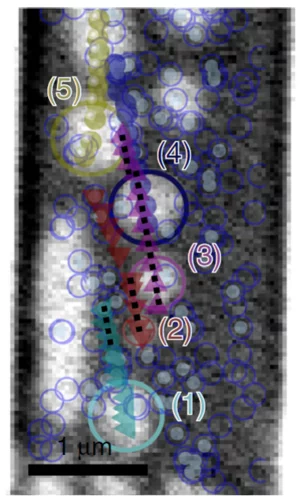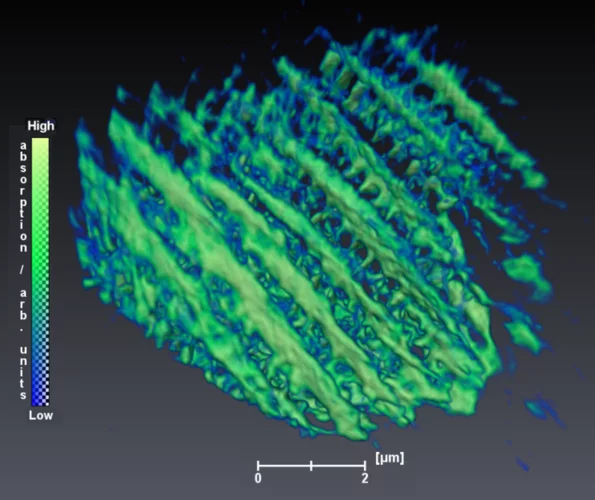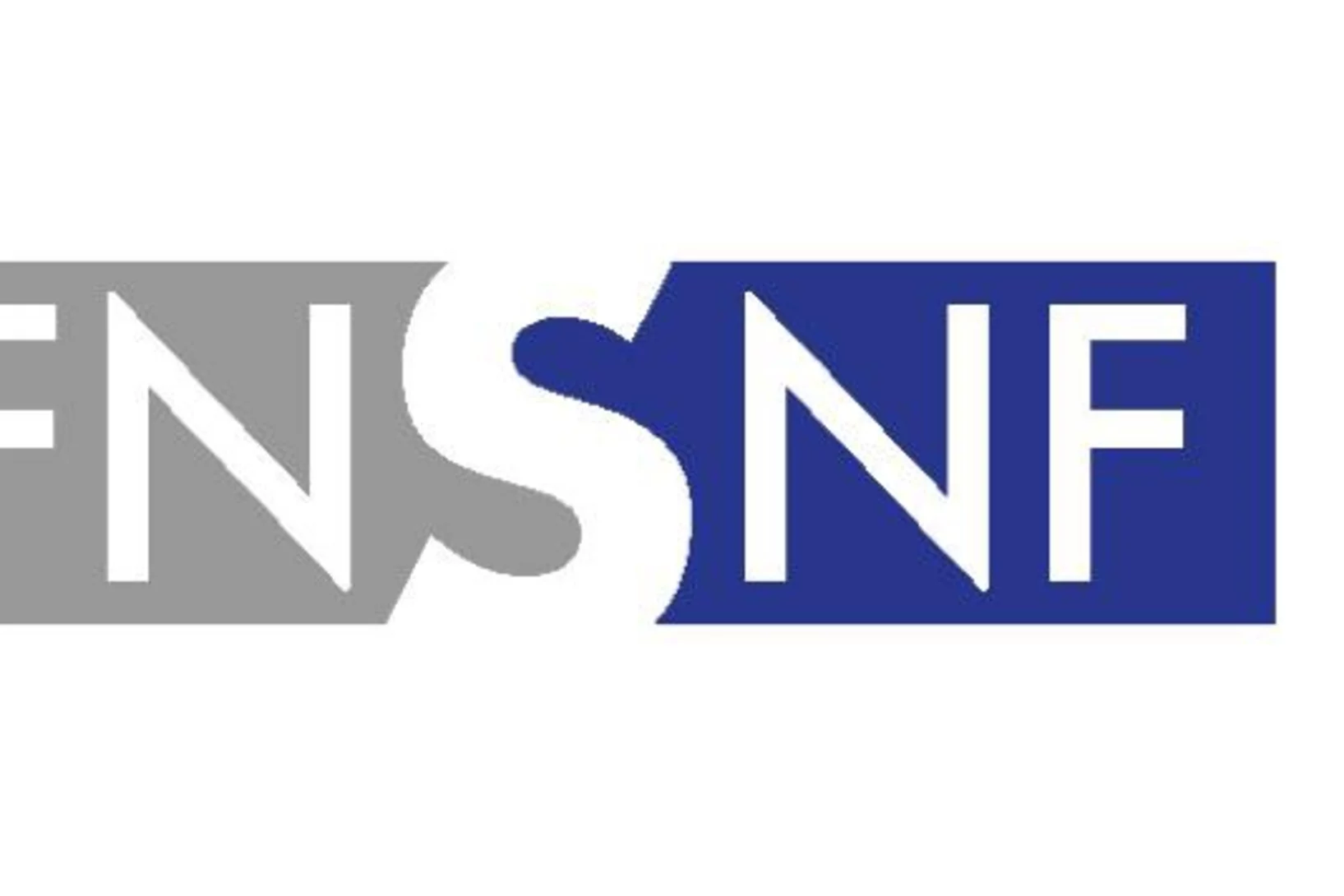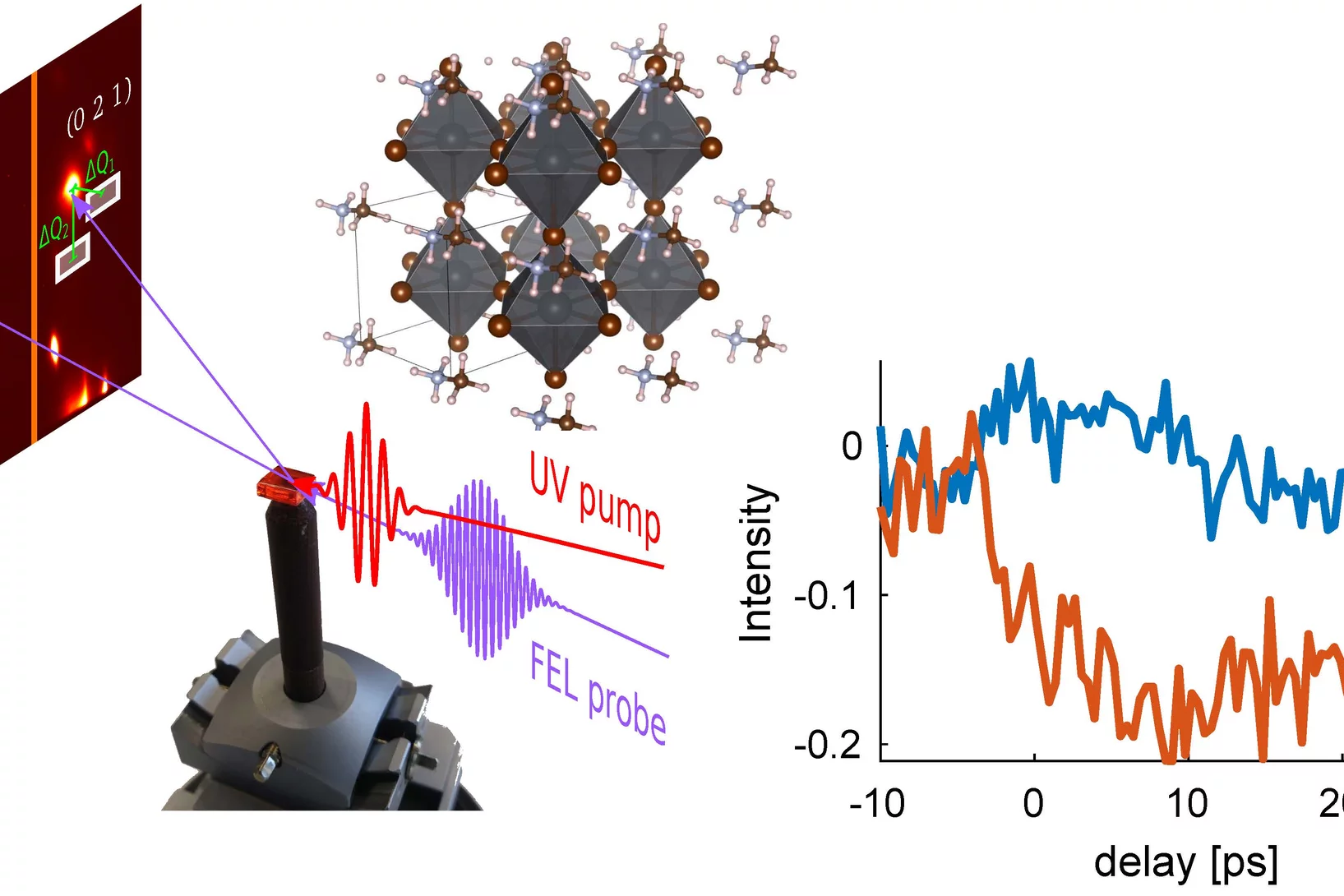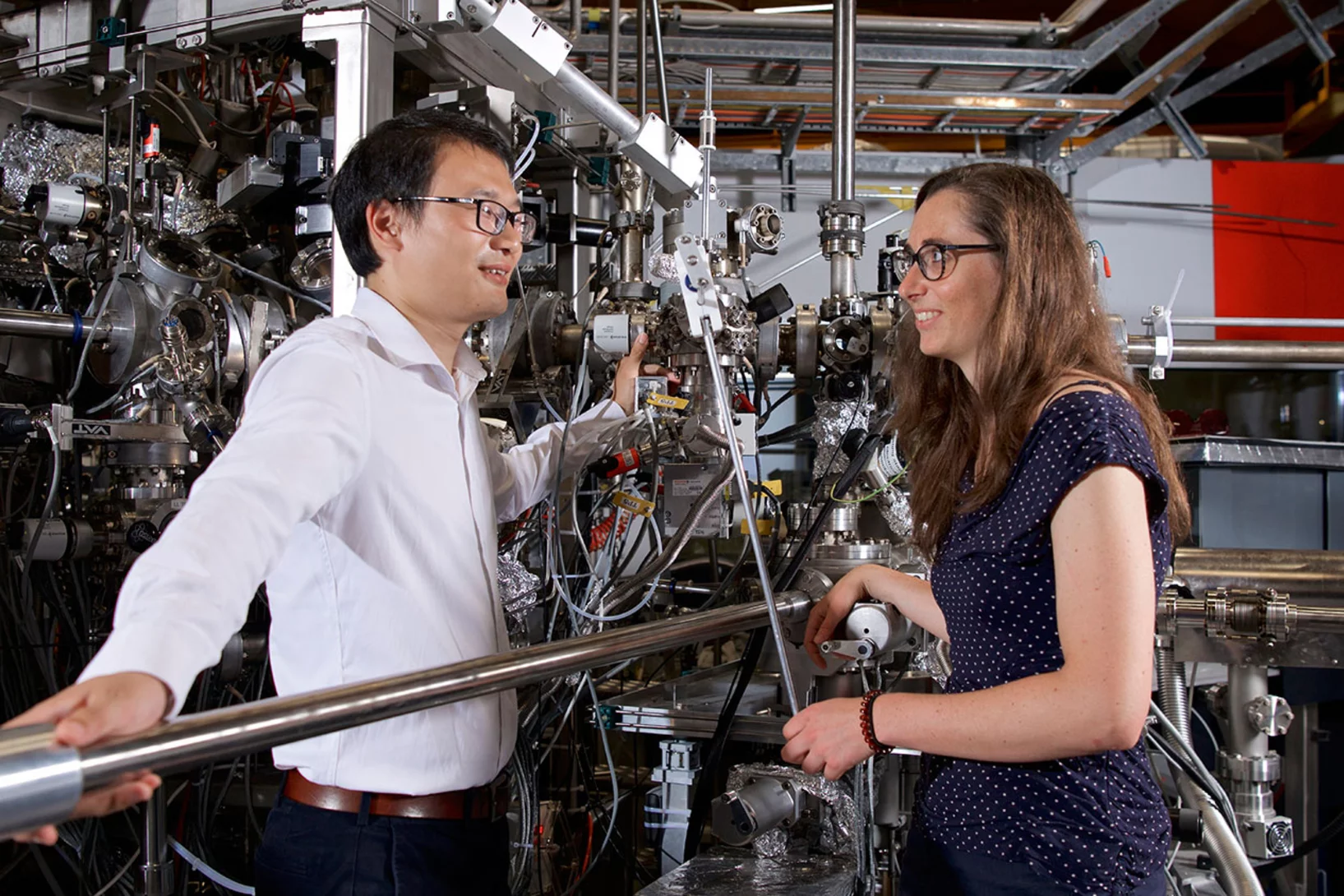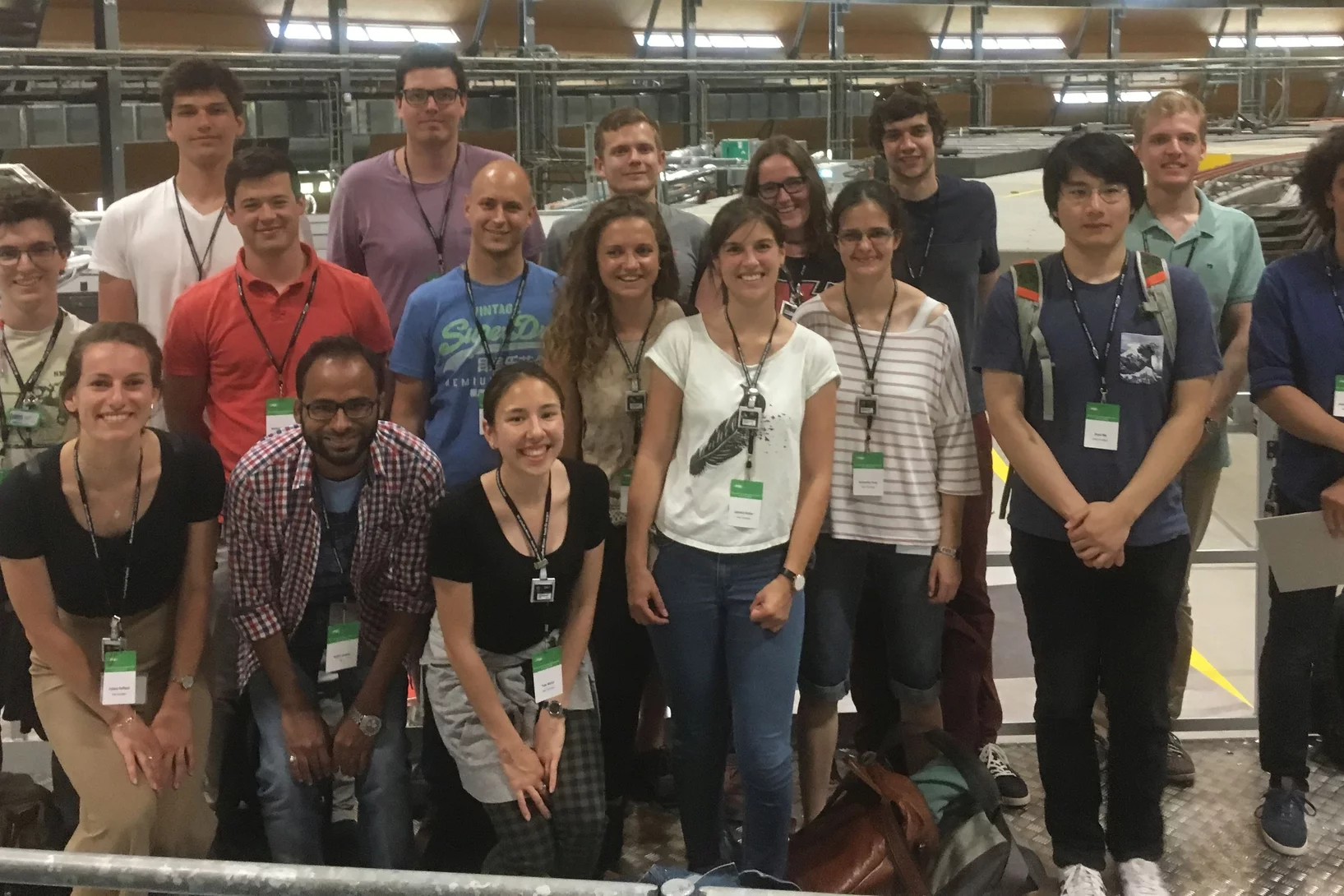Spin-wave emission from vortex cores under static magnetic bias fields
Employing time-resolved STXM imaging, researchers investigated the emission of spin waves from a magnetic vortex core. By applying static magnetic fields, the control of both the shape of the vortex core and of the spatial profile of the emitted spin waves could be demonstrated, allowing for the fabrication of field-tunable spin wave focusing elements.
Buried moiré supercells through SrTiO3 nanolayer relaxation
The authors find that an annealing process can create a highly ordered network of two-dimensional line defects at the buried interface between a relaxed film and its substrate. The low dimensional network spacing is directly related to the lattice mismatch and can correspondingly be tuned by the choice of substrate.
Conduction control in nanoparticles
Light induced propagation strain pulse, converting nanoparticles of Ti3O5 from semiconducting to metallic phase.
Structural involvement in the melting of the charge density wave in 1T-TiSe2
The authors find using resonant and non-resonant x-ray diffraction on an x-ray free electron laser that the structural distortion and the underlying electronic structure of the charge density wave in TiSe2 show different energetics at ultrafast timescales. This indicates that the lattice distortion stabilizes the charge density wave.
Ultrafast calorimetry of deeply supercooled water
FEL-based ultrafast calorimetry measurements show enhancement and maximum in the isobaric specific-heat.
Magnetic vortices come full circle
The first experimental observation of three-dimensional magnetic ‘vortex rings’ provides fundamental insight into intricate nanoscale structures inside bulk magnets, and offers fresh perspectives for magnetic devices.
Single femtosecond laser pulse excitation of individual cobalt nanoparticles
The interaction of light and magnetism at the nanoscale is a topic of fundamental interest and with potential impact to future spintronics applications. in this work we address theoretically and experimentally the effect of femtosecond laser pulse excitation on the magnetic, structural, and chemical stability of individual magnetic cobalt nanoparticles including the role of the substrate or matrix. Eventually, we discuss possible pathways to achieve laser-induced magnetic switching in individual nanostructures.
This work has been highlighted as "Editors' Suggestion" in Physical Review B.
World Record: 7 nm Resolution in Scanning Soft X-ray Microscopy
During the past decade, scientists have put high effort to achieve sub-10 nm resolution in X-ray microscopy. Recent developments in high-resolution lithography-based diffractive optics, combined with the extreme stability and precision of the PolLux and HERMES scanning X-ray microscopes, resulted now in a so far unreached resolution of seven nanometers in scanning soft X-ray microscopy. Utilizing this highly precise microscopy technique with the X-ray magnetic circular dichroism effect, dimensionality effects in an ensemble of interacting magnetic nanoparticles can be revealed.
Enhanced Stability of a Pyrophosphate cathode for Na-ion batteries
The structural changes of Na3.32Fe2.11Ca0.23(P2O7)2 during several charge discharge cycles is viewed by its powder pattern and selected cell parameter evolution.
Two-color snapshots of ultrafast charge and spin dynamics
In a joint research effort, an international team of scientists lead by Emmanuelle Jal (Sorbonne Université) performed a time-resolved experiment at the FERMI free-electron laser to disclose the dynamic behavior of two magnetic element of a compount material in only one snapshot. The X-ray Optics and Applications group developed a dedicated optical element for this experiment that is usable with two different photon energies (colors) simultaneously.
Customising an electronic material
PSI scientists have investigated a material that could be suitable for future data storage applications. They have manipulated the crystalline structure of their sample while measuring how this affects the material’s magnetic and electronic properties.
X-rays illuminate the particle atomic structure of cyan light emitting 6-monolayers CsPbBr3 nanoplatelets by Total Scattering
A cyan light (492 nm) emitting colloidal suspension of CsPbBr3 nanoplatelets in a flask, together with the high-quality XRPD Total Scattering pattern of the suspension measured at the X04SA-MS beamline and the full-nanoparticle structure thereby inferred.
Cherned up to the maximum
In topological materials, electrons can display behaviour that is fundamentally different from that in ‘conventional’ matter, and the magnitude of many such ‘exotic’ phenomena is directly proportional to an entity known as the Chern number. New experiments establish for the first time that the theoretically predicted maximum Chern number can be reached — and controlled — in a real material.
Grosser Rat bewilligt 2,4 Millionen für Technologiezentrum Anaxam
Der Kanton Aargau unterstützt das Technologietransferzentrum Anaxam in Villigen für die Dauer von vier Jahren mit insgesamt 2,4 Millionen Franken. Der Grosse Rat hat am Dienstag in Spreitenbach den entsprechenden Kredit mit 124 zu 3 Stimmen bewilligt.
Operando X-ray diffraction during laser 3D printing
Ultra-fast operando X-ray diffraction experiments reveal the temporal evolution of low and high temperature phases and the formation of residual stresses during laser 3D printing of a Ti-6Al-4V alloy. The profound influence of the length of the laser-scanning vector on the evolving microstructure is revealed and elucidated.
Tailoring Spin-Wave Channels in an Artificial Spin Ice
Magnonic crystals are periodic magnetic structures, which are attracting great interest because of their potential use in low-power information technology based on spin waves, or magnons. Artificial spin ices have been recently studied as reconfigurable magnonic crystals, but achieving the required combination of magnetic state reconfigurability and desired magnon dispersions remains challenging. Here, researchers propose a hybrid system that makes use of a magnetic thin film underlayer to couple and strengthen the interaction between the artificial spin ice’s nanoelements though spin waves. Moreover, the magnetic state of the artificial spin ice gives rise to directional spin wave channels in the underlayer. This hybrid system opens a new direction for band structure engineering in reconfigurable magnonic crystals.
Logic operations with domain walls
A collaboration of scientists from the ETH Zürich and the Paul Scherrer Institute successfully demonstrated the all-electric operation of a magnetic domain-wall based NAND logic gate, paving the way towards the development of logic applications beyond the conventional metal-oxide semiconductor technology. The work has been published in the journal Nature.
Optics for spins
In this work, published on the front cover page of Advanced Materials, an international collaboration of Italian, American, and Swiss scientists demonstrated a novel concept for the generation and manipulation of spin waves, paving the way towards the development of magnonic nano-processors.
Can skyrmions read?
Can a skyrmion-based device be used to read a handwritten text? In this work, an international scientist collaboration led by the Korea Institute of Technology and the IBM Watson research center could provide a first answer to this question by fabricating a proof-of-principle single-neuron artificial neural network, using X-ray magnetic microscopy at the Swiss Light Source to investigate its performances.
Emergence of Nontrivial Low-Energy Dirac Fermions in Antiferromagnet EuCd2As2
When magnetism meets topology, colorful novel states can emerge in condensed matter. It is widely believed that parity-time symmetry plays an essential role for the formation of Dirac states in Dirac semimetals. So far, all of the experimentally identified topological nontrivial Dirac semimetals possess both parity and time reversal symmetry. Since the magnetism will break time-reversal symmetry, only in special cases the Dirac states can be protected in a magnetic system. Thus, the realization of magnetic topological Dirac materials remains a major issue in the research of topological physics. In this work, the authors ascertained that the ground state of EuCd2As2 is a good candidate for magnetic topological Dirac semimetal when the spins point in the out-of-plane direction in the A-type antiferromagnetic phase. The Dirac state is protected by the combination of parity-time symmetry with additional translation operation. Moreover, when the spins deviate from out-of-plane direction, the bulk Dirac cone will open a gap, and the system develops into a novel state containing axion insulator, antiferromagnetic topological crystalline insulator, and higher order topological insulator.
Many skyrmions, one angle
Employing a tailored multilayered magnetic film, optimized for the zero-field stabilization of magnetic skyrmions, researchers have investigated the influence of the skyrmion diameter on its current-induced sideways motion, uncovering mechanisms that allow for this topological property to be controlled.
Soft X-ray Laminography: 3D imaging with powerful contrast mechanisms
3D imaging using synchrotron radiation is a widely used tool that allows access to the inner structure of complex objects. An international and interdisciplinary consortium of scientists from the Swiss Light Source (PolLux and cSAXs), the Friedrich-Alexander-Universität Erlangen-Nürnberg, and the University of Cambridge developed the new 3D imaging technique of Soft X-ray Laminography (SoXL). SoXL allows for the investigation of thin and extended samples while taking advantage of the characteristic absorption contrast mechanisms in the soft X-ray range, providing 3D information with nm spatial resolution.
Wrinkles and wrinklons: magnetic films with tuneable topographies
Sebastian Gliga has been awarded an SNF Spark grant to investigate the possibility of combining magnetic thin films with graphene to create logical devices. As electronic components, such as those found in computer CPUs, are miniaturized, they generate waste heatand alternative schemes are being explored to create novel data processing architectures. This project, to be carried out in the Microspectroscopy group (PSD), aims to exploit the tunable topography of graphene to create magnetic systems, which allow simultaneously guiding spin waves and performing logical operations based on spin wave interference.
Ultrafast diffuse x-ray scattering of a hybrid perovskite crystal
Organic–inorganic ‘hybrid’ perovskites have recently gained attention as a low-cost alternative to silicon solar cells. However, many properties of these materials are still poorly understood. In particular, how imperfections in the crystals, which can be both static or dynamic, affect energy transport remains unclear.
Field-Induced Double Spin Spiral in a Frustrated Chiral Magnet
X-rays and neutrons has been used to investigate the correlation between structural and magnetic chirality in magnetic fields and its impact on the polarization in multiferroic langasites. A long wavelength modulation of the magnetic structure has been found, and it is shown that the chirality of the crystals structure connects to chirality of the magnetic structure that leads to an additional electric polarization in this field induced phase, which, depending on the christal chirality, can either increase the electric polarization or lead to a reversal of it for increasing magnetic fields. The theoretical description based on allowed Lifshitz invariants intriguingly contain all the essential ingredients for the realization of topologically stable antiferromagnetic skyrmions.
Characterisation of work hardening and springback in Ti
Interrupted standard tensile tests with in situ x-ray diffraction and quasi-in situ electron backscatter diffraction reveal the origin behind the work hardening plateau and springback.
Ultrafast Transient Increase of Oxygen Octahedral Rotations in a Perovskite
Via femtosecond x-ray diffraction, we observe an ultrafast increase of the octahedral rotation angle in the perovskite EuTiO3 after ultrafast laser excitation. This is opposite to what is expected from an increase in temperature. We ascribe this increase to an effective change of ionic sizes that transforms directly into a change of the Goldschmidt tolerance factor. Rotating oxygen octahedra at will opens up the possibility to control electronic and magnetic properties of perovskites on ultrafast timescales.
Research and tinkering – SwissFEL in 2019
The newest large research facility at the Paul Scherrer Institute, SwissFEL, has been completed. In January 2019 it began regular operation. Henrik Lemke, head of the SwissFEL Bernina research group, gives an interim report.
Weyl fermions discovered in another class of materials
A particular variety of particles, the so-called Weyl fermions, had previously only been detected in certain non-magnetic materials. But now researchers at PSI have experimentally proved their existence for the first time in a specific paramagnetic material.
PSI School for Master Degree Students - Introducing Photons, Neutrons and Muons for Condensed Matter Physics and Materials Science
From 17 – 21 June 2019 the Neutron and Muon Division (NUM) and the Photon Science Division (PSD) of PSI hosted 18 Master Degree students of physics, chemistry, materials and interdisciplinary science, as well as nuclear engineering to provide an introduction to the characterization of materials with large scale facilities like SINQ, SμS, SLS and SwissFEL. The course taught a basic understanding of how photons, neutrons and muons interact with matter, and how this knowledge can be used to solve specific problems in materials research.
Details of the program can be found at http://indico.psi.ch/event/PSImasterschool


